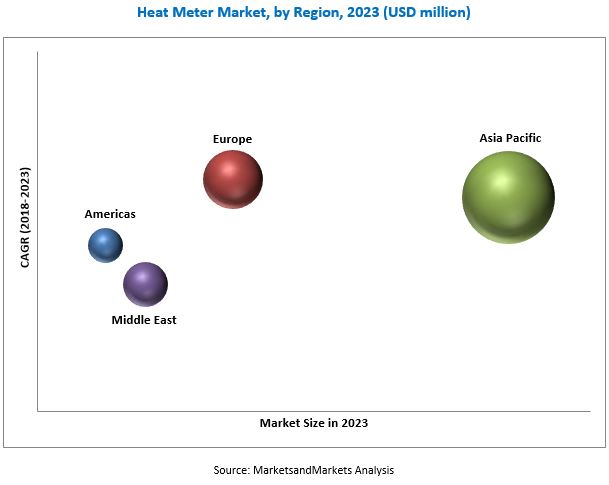The global heat meter market is projected to reach USD 1,218.9 million by 2023 from an estimated USD 849.1 million in 2018, at a CAGR of 7.50%. This growth can be attributed to the increasing mandatory legislative requirement to install heat meters for accurate measurement of heat consumption.
The residential segment is expected to hold the largest share of heat meter market, by type, during the forecast period.
The residential segment is estimated to dominate the heat meter market in 2018 and is projected to have the largest market share during the forecast period. Increase in the number of residential dwellings across the globe year on year has made a positive impact on heat meter market during the forecast period. Residential spaces connected to district heating and cooling networks necessarily require heat meters as it is by far the best practice for generating energy bills based on consumption.

The wireless connection segment is expected to be the fastest growing segment of the heat meter market, by connectivity, during the forecast period.
The wireless connection segment accounted for the highest CAGR during the forecast period. Growth of this segment can be attributed to the advancement in technologies, lower cost of installation and maintenance, higher reliability, and ease of use. Europe region is expected to witness a high growth in wireless connection segment during the forecast period because of the increased spending in connectivity technologies infrastructure.
Request Sample Pages:https://www.marketsandmarkets.com/requestsampleNew.asp?id=87058049
Asia Pacific: The leading market for heat meter
In this report, the heat meter market has been analyzed with respect to four regions, namely, Americas, Europe, Asia Pacific, and Middle East & Africa. Asia Pacific is estimated to dominate the global heat meter market in 2018 owing to the growth in district heating infrastructure, construction activities, rise in population, and climatic change. The demand for heat meters in Asia Pacific is growing, with about 5.5 million installations in China in 2017.
To enable an in-depth understanding of the competitive landscape, the report includes the profiles of some of the top players in the heat meter market. Some of the key players Kamstrup (Denmark), Danfoss (Denmark), Siemens (Germany), Diehl (Germany). The leading players are adopting various strategies to increase their shares in the heat meter market.

